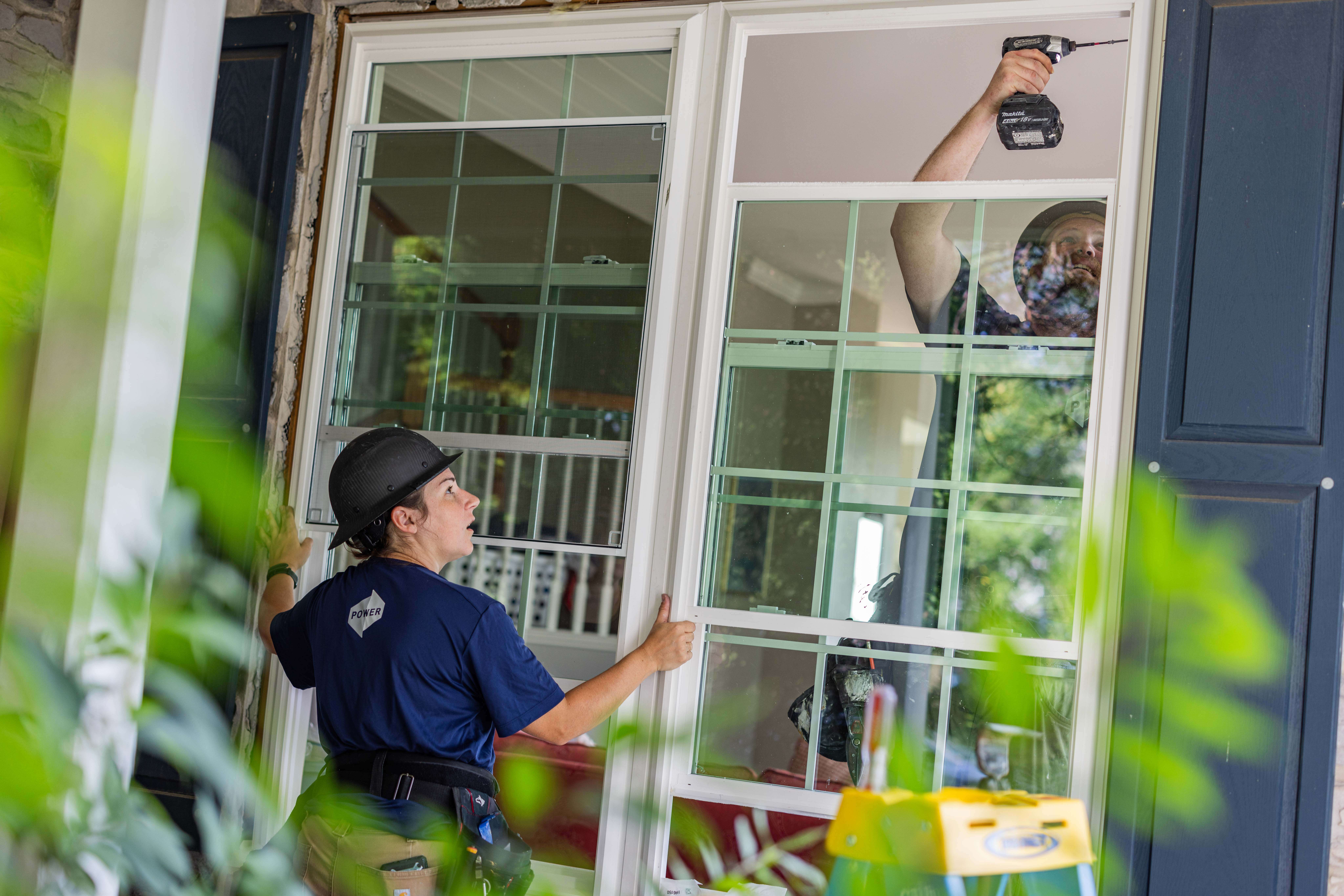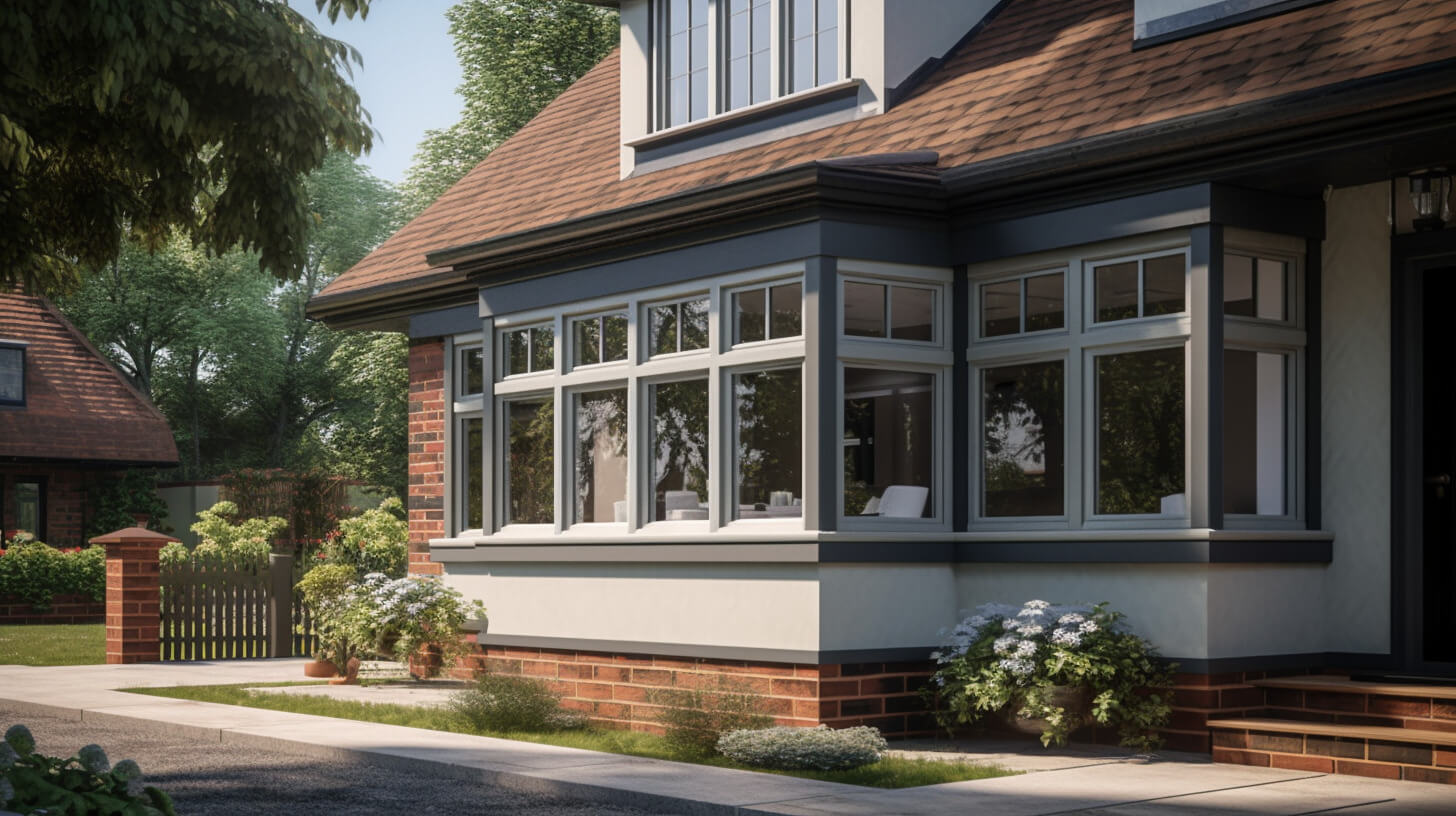What Are Standard Window Sizes?
When replacing windows in your home, understanding standard window sizes and their corresponding dimensions is essential. Most window manufacturers make windows in common sizes that are designed to fit typical rough openings in homes, which helps keep costs down and simplify installation. While these window dimensions may not fit every home, using them whenever possible can save you money compared to custom windows.
Standard window sizes are based on common opening sizes in residential homes. These windows are manufactured in mass quantities, making them more affordable and available to purchase. However, many older homes were built before standard window sizes were created and often require custom window sizes, raising the cost of window replacement.
How to Determine the Right Window Size for Your Home
Window manufacturers use a simple size notation for replacement windows to help you identify the size needed for your rough opening. A window’s size notation displays width and height combined. The first two numbers are for width and the second two numbers are for height. A 2426 replacement window would have a width of 2 feet, 4 inches and height of 2 feet, 6 inches. The actual measurements of the window are usually 1/2 inch less than the whole number identifier it is labeled as.
For example, a window marked to fit a 44 inch x 44 inch opening will actually measure around 43 1/2 inches x 43 1/2 inches. That is because the manufacturer adds half an inch to each of the size dimensions so the window can be installed with ease.
The window dimensions you choose will also affect the cost of window installation in your home. Read on to learn about different types of windows with their standard sizes, models, and their average cost by top window brands.
Average Window Size for Homes
The most common window size is 36 inches wide x 60 inches high. Double-hung and single-hung windows are the most popular windows you will find in U.S. homes. Because they are often 36 by 60 inches, that is the average window size.
Let’s take a closer look at some of the most common window types for homes and what sizes each comes in.
Sizes for 6 Popular Window Types
Regardless of which type of window you select, you need to know how to measure a window. Another handy tip to know? The most common window size across the country is 2 feet by 3 feet.
Double-Hung Window Sizes
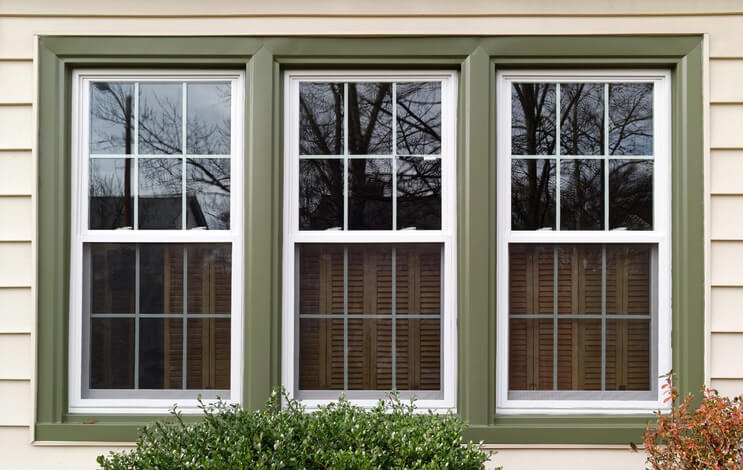
Double-hung windows are the most common type of replacement window in the United States. They come in a wide range of sizes to fit any rough opening.
- Double-hung widths: 24 inches minimum to 48 inches maximum
- Double-hung heights: 36 inches minimum to 72 inches maximum
Double-Hung Window Size Chart
Below, you’ll find a size chart for double-hung windows detailing the rough openings of the widths and heights.
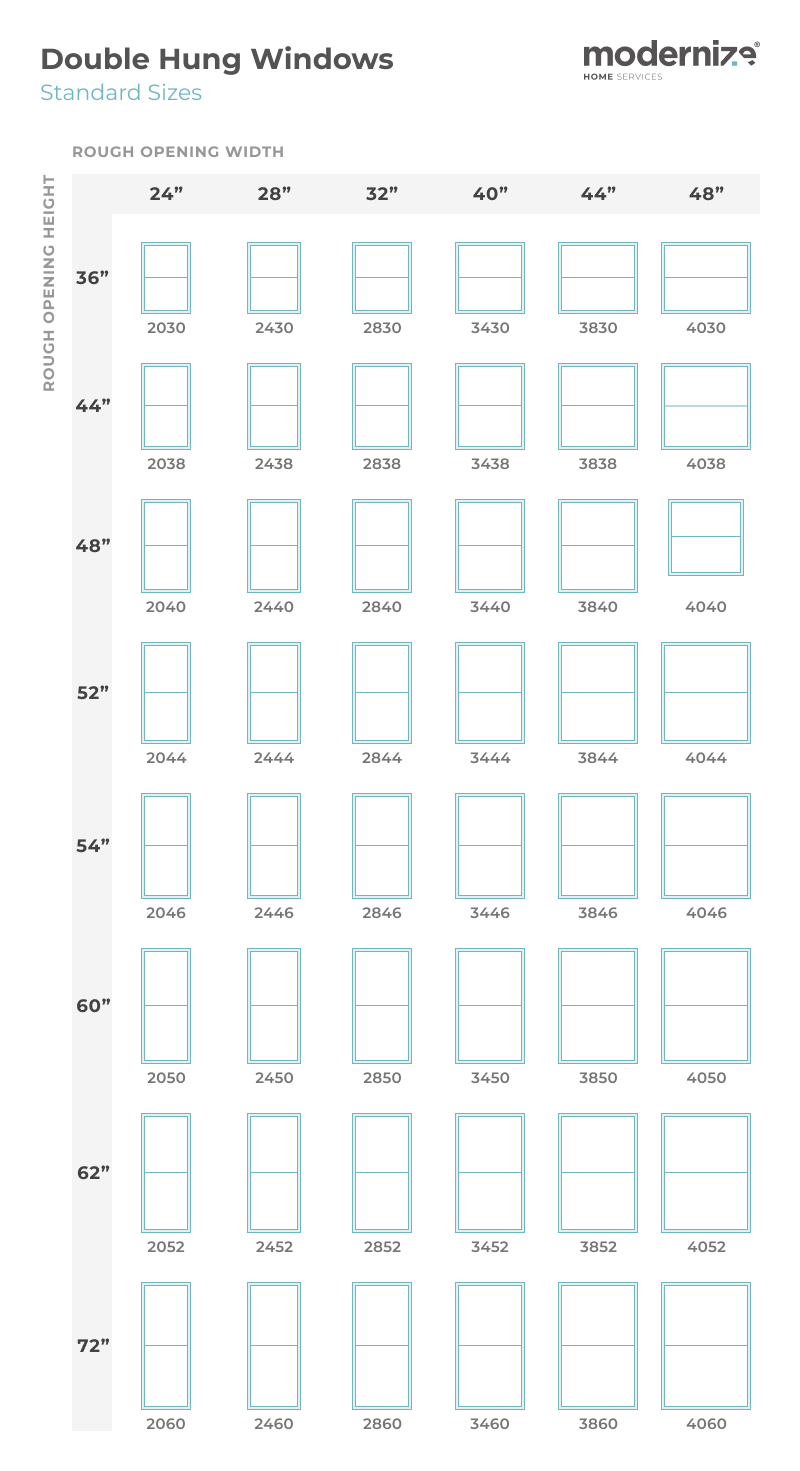

Check out our guide to double-hung window sizes to learn more.
Picture Window Sizes

Picture windows are designed for architectural appeal and for allowing more light into a home. Here are the ranges for widths and heights:
- Picture window width: 24 inches minimum to 96 inches maximum
- Picture window height: 12 inches minimum to 96 inches maximum
The largest picture windows are around 8 feet x 10 feet (96 inches x 120 inches).
Picture Window Sizes Chart
The size chart below shows the rough opening heights and widths for picture windows. You can use it to help you get an idea for the general size and shape of the window as well as for finding specific model numbers of picture windows.
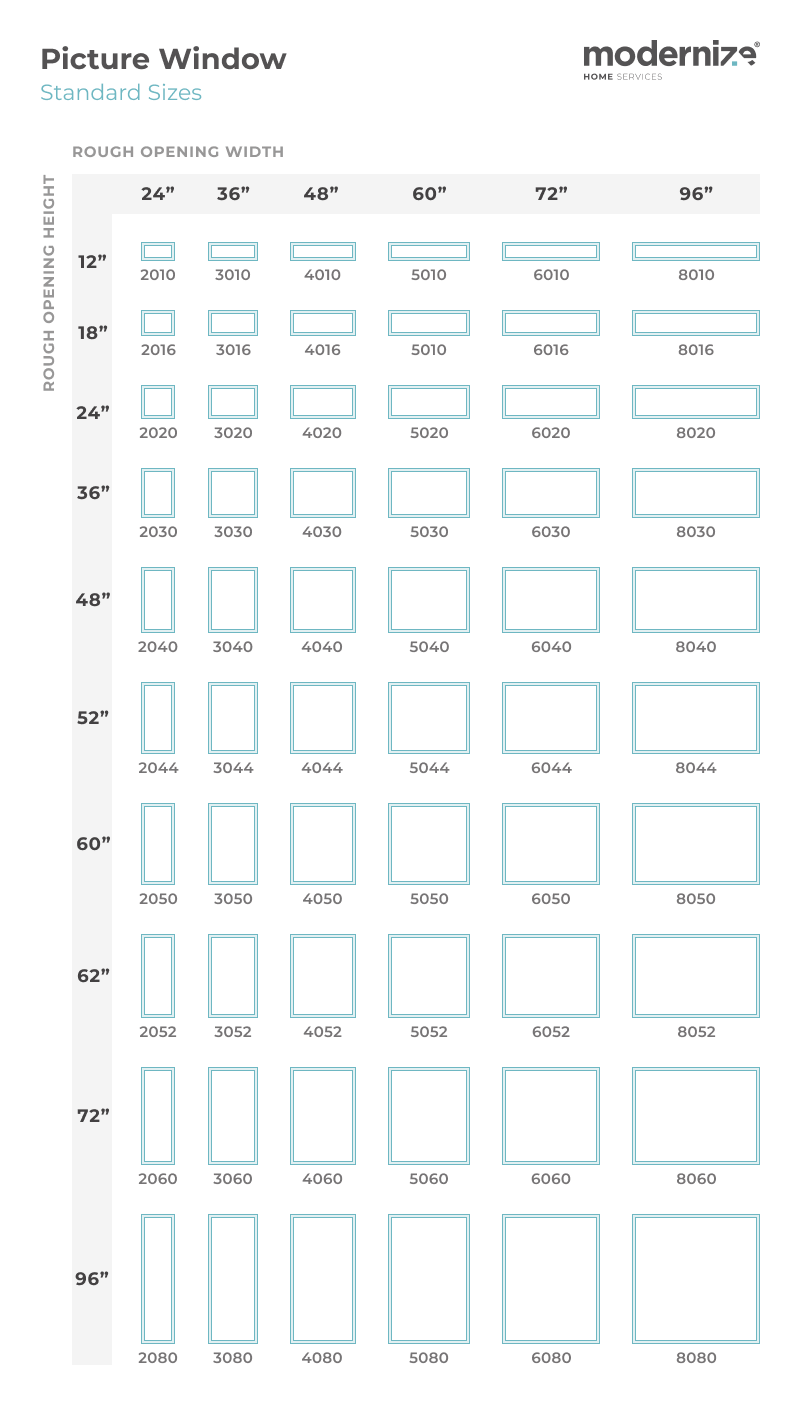

Read our guide to picture window sizes to learn more.
Sliding Window Sizes
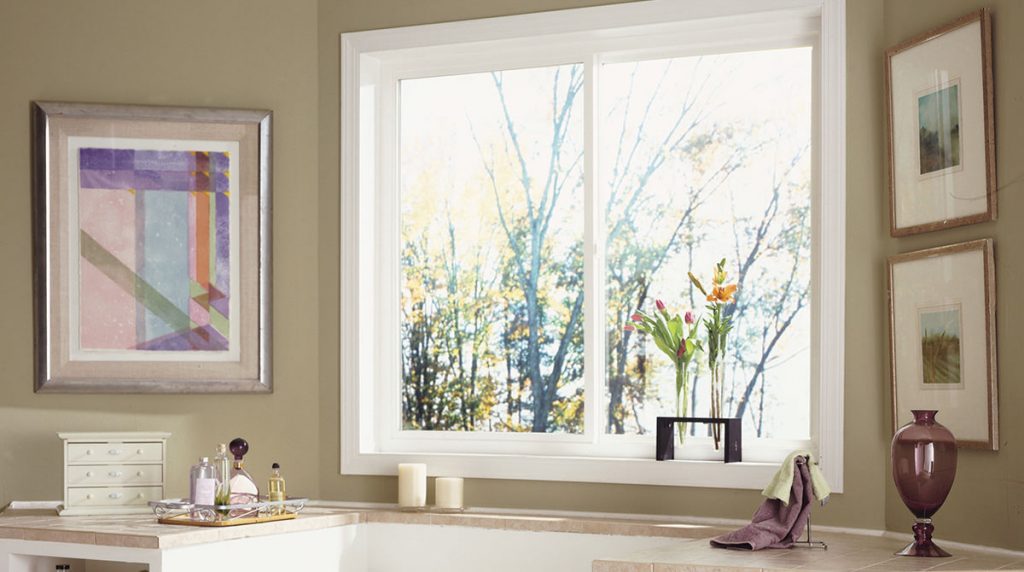
Sliding windows are usually wider than they are tall, but they also come in other shapes and sizes. Here’s the typical range of widths and heights offered standard:
- Sliding window width: 36 inches min to 84 inches max
- Sliding window height: 24 inches min to 60 inches max
Sliding Window Size Chart
You can explore all the standard sizes of a sliding window in our size chart below. Be aware that, like for other window types on this page, these sizes show the rough opening height and width for your window. We also show the model number these windows are known by.
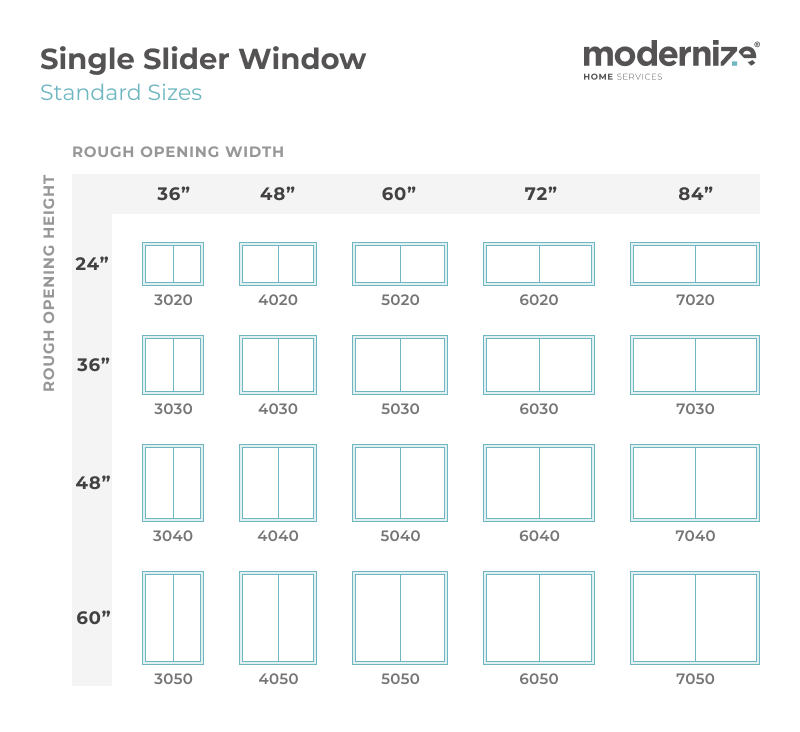

You can see all the standard sizes for sliding windows as well as explore the most popular sizes for homes at our guide to sliding window sizes.
Bay Window Sizes

Bay windows can help enhance any room in your home, but it is a major (and costly) project. These are the standard size ranges you can expect to come standard from manufacturers:
- Bay window width: 3 feet, 6 inches minimum to 10 feet, 6 inches maximum
- Bay window height: From 3 feet minimum to 6 feet, 6 inches max.
Many homeowners find that their window is 3 to 6 feet wide and also 3 to 6 feet tall. The standard depth a bay window extends (so from the wall out to the furthest point of the window) is 18 to 24 inches.
To explore just how large these windows can get or how small you can find one in a standard size, check out our guide to bay window sizes.
Casement Window Sizes
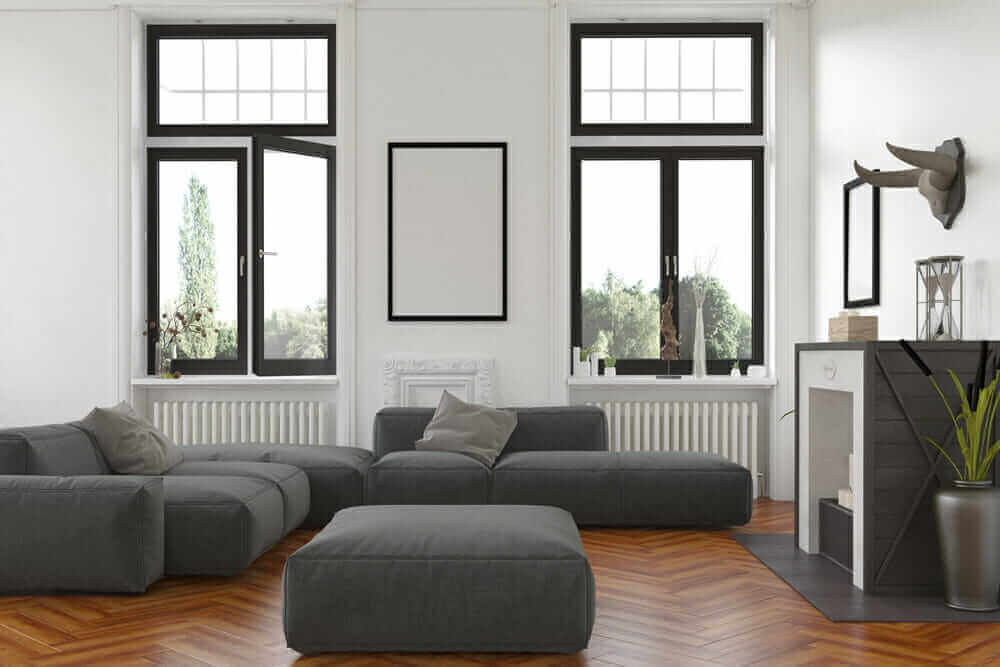
Hinged windows that open from the side are also known as replacement casement windows.
Casement window sizes have a fairly wide range of sizes that come standard:
- Casement width: ranges from 1 foot, 2 inches to 2 feet, 11 1/2 inches
- Casement height: ranges from 2 feet, 5 1/2 inches to 6 feet, 5 1/2 inches
Typically, a casement window for homes will start at 2 feet (24 inches) and increase in 2-inch increments. The height starts around 4 feet (48 inches) and increases in 6-inch increments.
You can read our complete guide to casement window sizes to find the right fit for your own home.
Awning Window Sizes

Awning windows are popular in rainy regions since they are hinged at the top and open up, creating a natural awning that lets you leave the window open even in inclement weather. Here are the standard sizes they come in:
- Awning window widths: 2 feet minimum to 3 feet, 10 1/8 inches maximum
- Awning window heights: 1 foot, 8 inches minimum to 7 feet, 8 7/8 inches maximum
Though they can come in larger sizes, awning windows tend to be one of the smaller (and thus cheaper) window types. The typical range homeowners choose from is 2 to 3 1/2 feet wide and 1 1/2 to 3 feet tall.
You can explore all there is to know in our guide to awning window sizes.
Custom Size Windows
If standard window sizes do not fit the rough openings of your home, you have two options.
First, you can adjust the size of your home’s rough openings to accommodate a standard window size. This is a good option if adjustments are not difficult.
If the first option does not work for you, you will need to order custom windows through a supplier like Lowe’s, Home Depot, or a local window company. You will give your window measurements to an associate and decide what frame material and glass you want for your specific window type. The supplier will help you figure out which companies can complete the order for you.
After the order is in, you will wait several weeks for the windows to be manufactured and shipped, either to your home or a pickup location. You will be responsible for finding a local window contractor to install them for you unless it was included in your purchase agreement. The cost of installing new windows will vary by the size and replacement window types you choose.

Older homes are especially well known for needing custom sized windows. This is because they were built before windows were being produced in mass quantities, so their windows often have odd dimensions that don’t fit standard window sizes. Dealing with custom windows is more time consuming, and there are more decisions to be made. You will also spend a great deal more money than you would with standard windows. But the benefit is that custom windows are tailored specifically for your home.
The Bottom Line on Standard Window Sizes
Choosing the right window size for your home is crucial for the success of your window replacement project. The standard window size in U.S. homes is 36 inches wide by 60 inches high, but that does not necessarily mean that window size will work for your home. By understanding the standard window sizes used for different window types as well as knowing how to measure your windows correctly, you can help avoid costly home improvement mistakes.
Compare top-rated windows pros in your area.
Read real homeowner reviews, explore qualifications, and view promotions. Modernize makes it easy to browse professionals and find one that will be perfect for your project.






